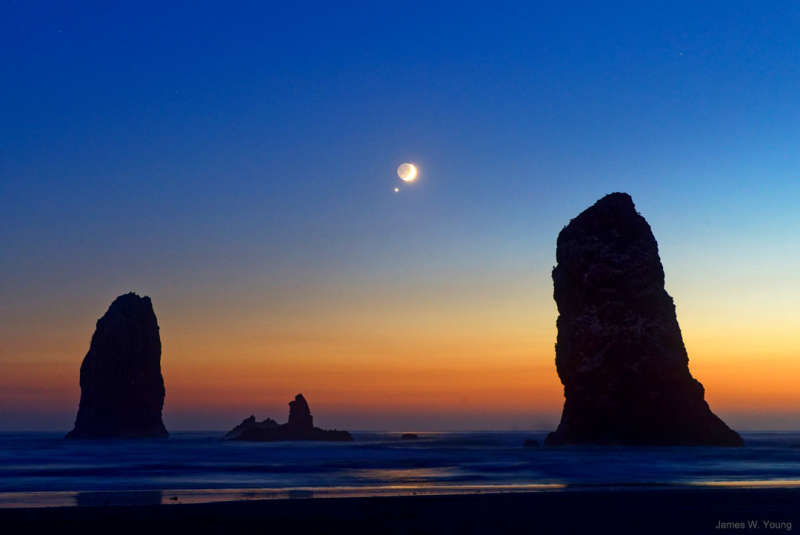 |
Астронет: Астрономическая картинка дня Луна и Венера над Кэннон-бич http://variable-stars.ru/db/msg/1423177/eng |
Credit & Copyright:
James W. Young
Explanation:
What's that spot next to the Moon?
Venus.
Two days ago, the crescent Moon slowly drifted past Venus, appearing
within just two degrees at its closest.
This conjunction, though, was just one of several
photographic adventures for our Moon this month
(moon-th),
because, for one, a partial solar eclipse occurred
just a few days before, on July 12.
Currently, the Moon appears to be brightening, as seen from the Earth, as the fraction
of its face illuminated by the Sun continues to increase.
In a few days,
the Moon
will appear more than half full, and therefore be in its
gibbous phase.
Next week the face of
the Moon
that always faces
the Earth will become, as viewed from the Earth, completely illuminated by
the Sun.
Even this full phase will bring an adventure, though, as a total eclipse of this
Thunder Moon will occur on July 27.
Don't worry about
our Luna getting tired, though, because she'll be new again next month (moon-th)
-- August 11 to be exact -- just as she causes another partial eclipse of the Sun.
Pictured,
Venus and the Moon were captured from
Cannon Beach above a rock formation off the
Oregon
(USA)
coast known as the Needles.
About an hour after this image was taken,
the spin of the Earth caused both
Venus and the Moon to
set.
Authors & editors:
Robert Nemiroff
(MTU) &
Jerry Bonnell
(USRA)
NASA Web Site Statements, Warnings,
and Disclaimers
NASA Official: Jay Norris.
Specific
rights apply.
A service of:
LHEA at
NASA /
GSFC
& Michigan Tech. U.
